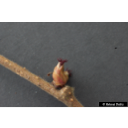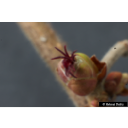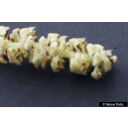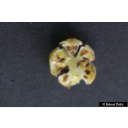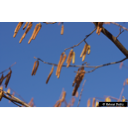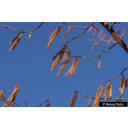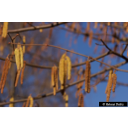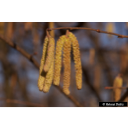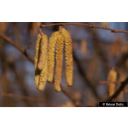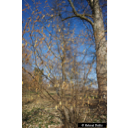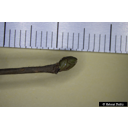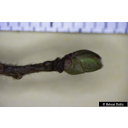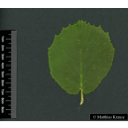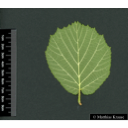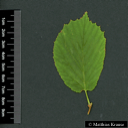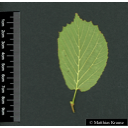Useful information about the taxon (species, subspecies, variety...)
Corylus avellana L. 1753
Betulaceae
(APG IV)European hazel, common hazel, cobnut
Taxon concept: The Plant List (2014), version 1.1
Distribution: Europe, Caucasus, Turkey, Northern Iran; introduced and cultivated in the United States and Canada
Size: 1 - 5 (m)
Flowering period: II - III
Corylus avellana L. - Accepted: Corylus avellana L. bei Zander 2008; Familie: Betulaceae (Zander 2008)Corylus avellana L. - Accepted: Corylus avellana L. bei The Plant List (2010); Familie: Betulaceae (APG III)Corylus avellana L. - Accepted: Corylus avellana L. bei BfN Checklist Flora DE; Familie: Betulaceae (APG IV)Corylus avellana L. - Accepted: Corylus avellana L. bei The Plant List (2010); Familie: Betulaceae (APG IV)Corylus avellana L. - Accepted: Corylus avellana L. bei Schmeil-Fitschen 2019; Familie: Betulaceae (APG IV)Corylus avellana L. - Accepted: Corylus avellana L. bei Rothmaler 2017; Familie: Betulaceae (APG IV)Corylus avellana L. - Accepted: Corylus avellana L. bei World Flora Online - APG IV (Angiosperms); Familie: Betulaceae (World Flora Online - APG IV (Angiosperms))
- Color of flower
- yellow-green
- Flowers
- monoecious flowers; male flowers in long drooping catkins and female flowers in very small, few-flowered catkins
- Flower ecology
- wind-pollinated (anemophilous)
- Life form
- shrub, treelet, tree
- Leaves
- 6-12 cm long, doubly serrate leaves with hairs on both sides
- Foliage persistence
- deciduous
- Fruits
- nut fruit with bell-shaped involucre
- Fruit ecology
- animal-dispersed (zoochorous) (birds, rodents: e.g. squirrels)
- Soil conditions
- on perculating or ground fresh, nutrient-rich, mildly to moderately acidic, humus-rich stone and loam soils
- Light conditions
- full sun to partial shade
- Succession type
- pioneer species
- Natural occurrence (habitat)
- understorey of open herb-rich deciduous forests, forming stands in hedgerows, forest edges, coppice forest, field scrub; from lowland to highland
- Comment to ecology
- fruitwood and lumber
- Vegetation typ and synecology (plant community)
- temperate, mixed mesophytic broad-leaved deciduous forests; especially in the Carpinion and Ulmion, but more optimal in older Prunetalia stages of potential sites of the Fagenion and Fagetalia, respectively, also at open scree e.g. in association with Clematis vit. in close proximity to the Tilio-Acerion; character species of the class Querco-Fagetea
- Constraints according soil conditions
- sensitive to salt
- Status of alien naturalisation
- indigenous
- Comments
- the pollen causes allergic reactions to sensitive people
- General recommendation
- recommended for beekeeping
- Usage
- as an ornamental shrub; edible nuts (hazelnuts) are used e.g. in chocolate industry, and for obtaining of nut oil; the wood (hazel stems) was traditionally used for fencing, barrel hoops and for wattle and daub plasterwork as building material; also used as a bee fodder plant
- Phytopathogenic organisms
- is affected by the pathogens Pseudomonas avellanae and Pseudomonas syringae pv. coryli which cause bacterial canker of the European hazel
- Altidudinal lower limit (sea level in m)
- 0
- Altitudinal higher limit (sea level in m)
- 2,000
Bundesamt für Naturschutz (BfN) (1999-2001 and ongoing): Floraweb - Daten und Informationen zu Wildpflanzen und zur Vegetation Deutschlands. www.floraweb.de.; Erhardt, W., Götz, E., Bödeker, N. & Seybold, S. (2008): Der große Zander. Enzyklopädie der Pflanzennamen. Band 2. Arten und Sorten. Eugen Ulmer KG, Stuttgart (Hohenheim), 18. Aufl., 2103 S.; Haider, M. et al. (2005): Wildbienenkataster. See: https://www.wildbienen-kataster.de; Kew Gardens and Collaborators (2017): Plants of the World Online. see: plantsoftheworldonline.org.; Maurizio, Anna et al. (1982): Nektar und Pollen - die wichtigsten Nahrungsquellen der Honigbiene. 4. Ehrenwirth, München, 3, überabeitete Auflage; Oberdorfer, E. (2001): Pflanzensoziologische Exkursionsflora. Für Deutschland und angrenzende Gebiete. Eugen Ulmer Verlag, Stuttgart, 8., stark überarb. u. erg. Aufl, 1056 S. 978-3-8001-3131-0.; Pritsch, Günter et al. (1985): Bienenweide.. Neumann-Neudamm, Melsungen; Pritsch, Günter et al. (2007): 200 Trachtpflanzen erkennen und bewerten.. Kosmos, Stuttgart; Schick, B. & Spürgin, A. (1997): Die Bienenweide. Eugen Ulmer Verlag, Stuttgart, Auflage: 4., völlig neubearb. u. erw. A., 216 S. 978-3800174188.; Tirmenstein, D. A. (1991): Acer saccharum. In: Fire Effects Information System, [Online]. U.S. Department of Agriculture, Forest Service, Rocky Mountain Research Station, Fire Sciences Laboratory (Producer). See: https://www.fs.fed.us/database/feis/plants/tree/acesac/all.html; Westrich, P. et al. (2018): Die Wildbienen Deutschlands.. Ulmer Verlag ISBN 978-8186-0123-2.;
Diese Webseite verwendet Google Maps, um Karten und Standorte von Pflanzen in den Hohenheimer Gärten anzuzeigen. Dadurch werden unter Umständen Daten an Google weitergeleitet, was mit einer Verarbeitung Ihrer personenbezogenen Daten verbunden sein kann. Die Datenschutzerklärung von Google finden Sie hier: Datenschutzerklärung von Google
| Sex | Standort | Accession number | Planting year | Donation | IPEN | Lat. | Long. |
|---|---|---|---|---|---|---|---|
| Parzelle H | EG-H-043-21733 | 1910 | XX-0-HOH-EG-H-043-21733 | 48,7086489938 | 9,2075883551 | ||
| Parzelle H | SP-HS-022-10519 | 2015 | XX-0-HOH-SP-HS-022-10519 | 48,7105789031 | 9,2126302431 | ||
| Parzelle L | SP-LS-036-13497 | 2022 | XX-0-HOH-SP-LS-036-13497 | 48,7108855683 | 9,2157582352 | ||
| Parzelle L | SP-LS-018-23492 | 2021 | XX-0-HOH-SP-LS-018-23492 | 48,71060177 | 9,21519583 | ||
| Parzelle N | SP-NS-003-10728 | 2018 | XX-0-HOH-SP-NS-003-10728 | 48,711113509 | 9,2159506246 | ||
| Parzelle N | SP-NS-013-10737 | 2018 | XX-0-HOH-SP-NS-013-10737 | 48,7110271741 | 9,2161462361 | ||
| Parzelle N | SP-NS-038-10761 | 2018 | XX-0-HOH-SP-NS-038-10761 | 48,7114355945 | 9,2163619438 | ||
| Parzelle N | SP-NS-039-10762 | 2018 | XX-0-HOH-SP-NS-039-10762 | 48,7114145249 | 9,2163620437 | ||
| Parzelle N | SP-NS-062-10784 | 2017 | XX-0-HOH-SP-NS-062-10784 | 48,7116067716 | 9,2164884091 | ||
| Parzelle N | SP-NS-111-10824 | 2017 | XX-0-HOH-SP-NS-111-10824 | 48,7120069077 | 9,2165231714 | ||
| Parzelle N | SP-NS-005-15875 | 2018 | XX-0-HOH-SP-NS-005-15875 | 48,711096194 | 9,2162455071 | ||
| Vegetationsgeschichte-k2 Waldentwicklung im Bergland: Haselgebüsch mit Kiefer und Birke | VG-k2-25515 | XX-0-HOH-VG-k2-25515 | 0 | 0 |

